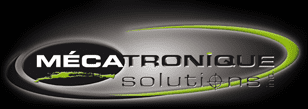The Cognex In-Sight system enhances quality control in food manufacturing. It offers advanced vision capabilities to ensure products meet high standards. With high-resolution imaging and real-time analysis, it addresses common challenges faced by food manufacturers.
This system reduces manual errors and improves efficiency, allowing your team to focus on what matters.
Streamline your daily tasks while ensuring every product is high quality. The In-Sight system integrates smoothly into existing workflows, making it a practical solution.
Do not let inefficiencies hold you back. Explore how Cognex In-Sight can transform your quality control processes today.










